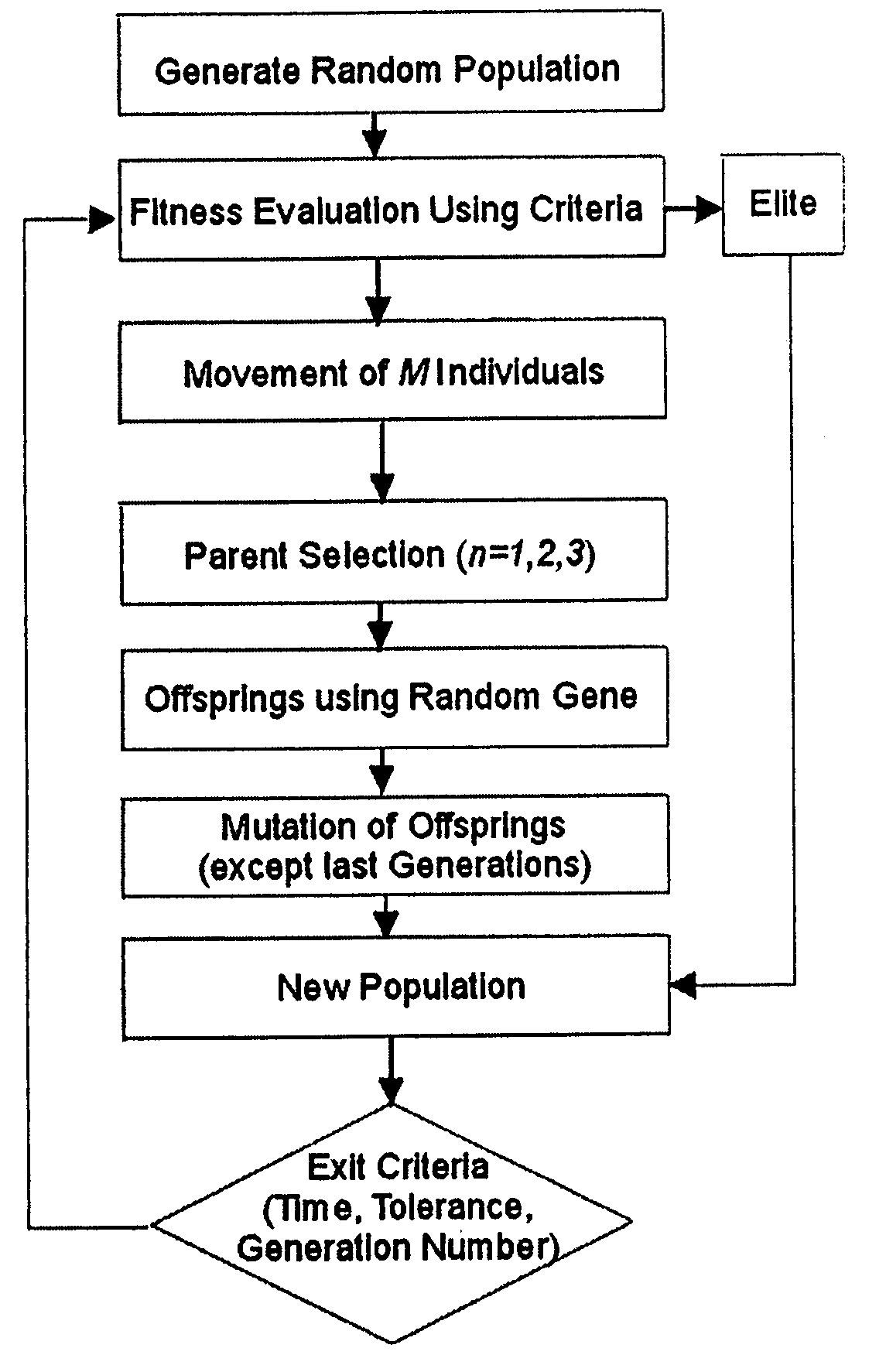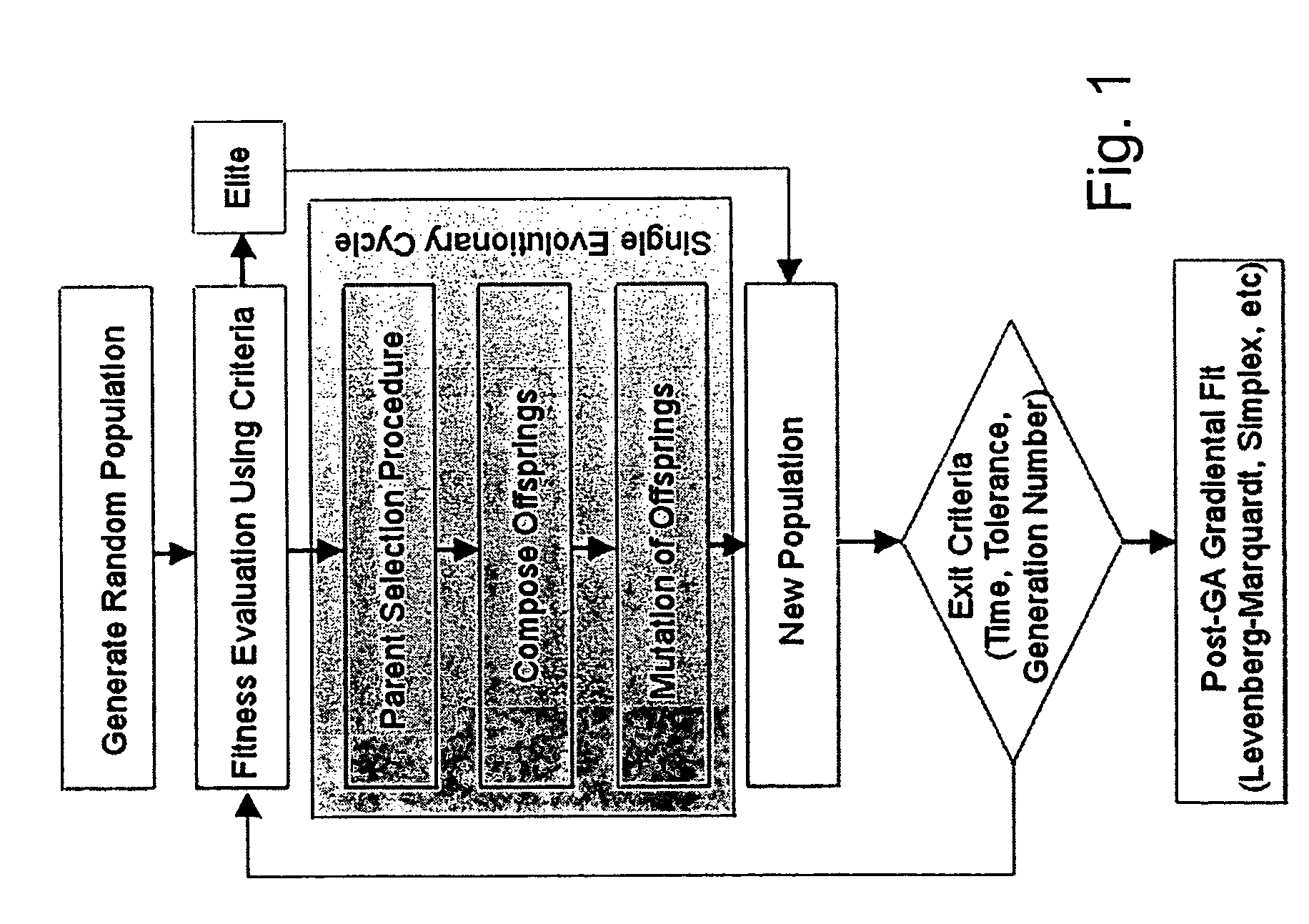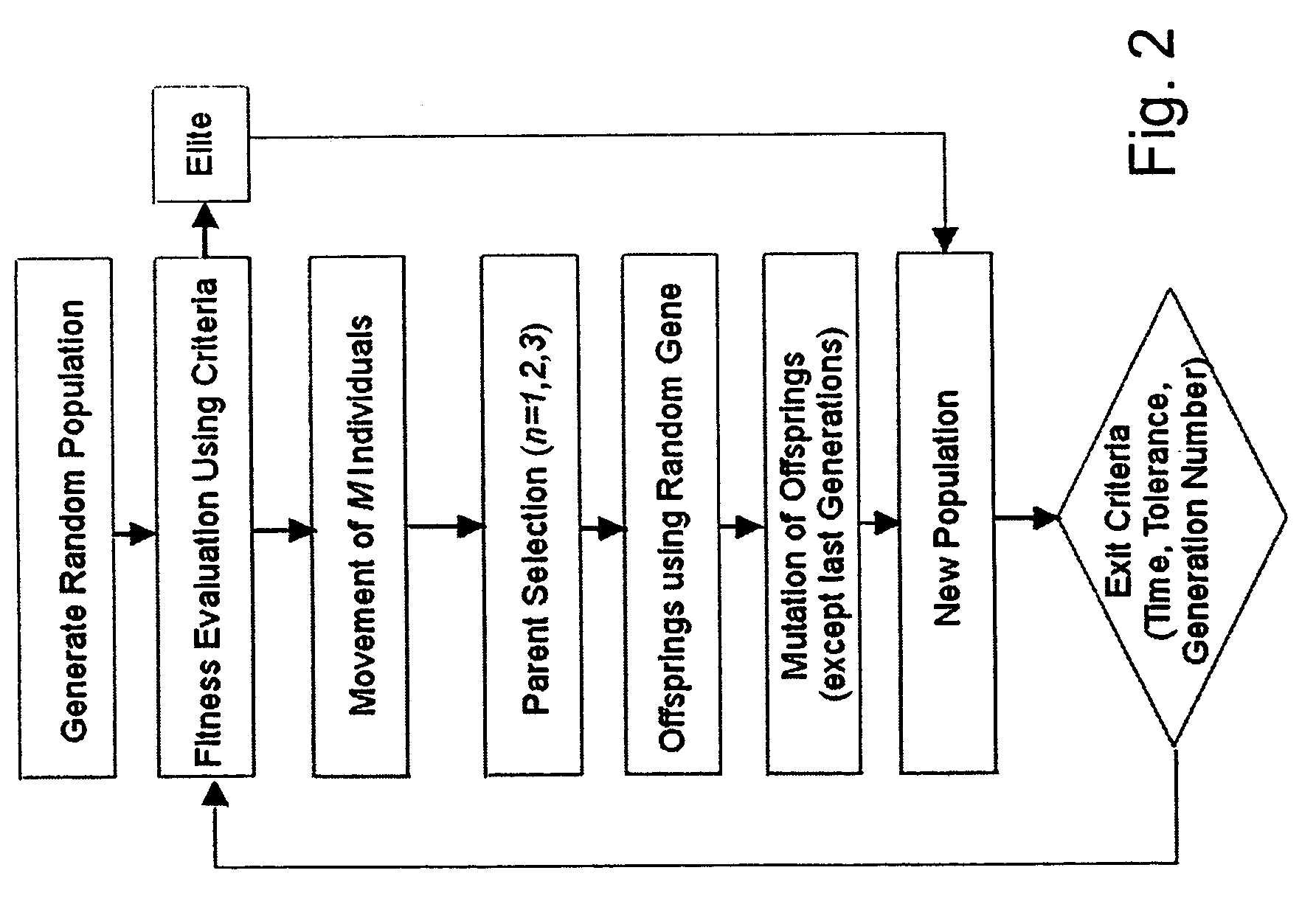Method of determining parameters of a sample by X-ray scattering applying an extended genetic algorithm including a movement operator
a genetic algorithm and x-ray scattering technology, applied in the field of determining parameters of samples by xray scattering, can solve the problems of gradient methods running the risk of getting trapped, difficult to obtain samples by other means, and inability to calculate simulated spectra for all possible test structures, etc., to achieve wide parameter space, low error value, and high chance
- Summary
- Abstract
- Description
- Claims
- Application Information
AI Technical Summary
Benefits of technology
Problems solved by technology
Method used
Image
Examples
Embodiment Construction
[0047]In the following, the inventive extended genetic algorithm and its application to x-ray analysis are explained in detail.
[0048]The classic scheme of genetic algorithm is extended to improve the robustness and efficiency of the method. New genetic operators implemented in this work are shown to increase the convergence speed and reliability of the optimization process. A complex model function with multiple local extrema and real x-ray reflectivity and diffraction data have been used to testify the modified algorithm. The effectiveness of the new technique is compared to other optimization methods.
[0049]X-ray metrological methods in science and industry have been proved to be efficient techniques for sample characterization and growth process development and control. A large variety of sample structures can be probed by x-rays to examine film thickness, interface roughness, crystallographic lattice strain and distortion, material contamination, etc. Although the measured x-ray ...
PUM
| Property | Measurement | Unit |
|---|---|---|
| physical scattering theory | aaaaa | aaaaa |
| scattering spectrum | aaaaa | aaaaa |
| physical model | aaaaa | aaaaa |
Abstract
Description
Claims
Application Information
 Login to View More
Login to View More - R&D
- Intellectual Property
- Life Sciences
- Materials
- Tech Scout
- Unparalleled Data Quality
- Higher Quality Content
- 60% Fewer Hallucinations
Browse by: Latest US Patents, China's latest patents, Technical Efficacy Thesaurus, Application Domain, Technology Topic, Popular Technical Reports.
© 2025 PatSnap. All rights reserved.Legal|Privacy policy|Modern Slavery Act Transparency Statement|Sitemap|About US| Contact US: help@patsnap.com



